
Another year comes to an end, and we still haven’t found the aliens. Fortunately, during this time, there were many other very interesting events connected with the cosmos. Since then, we have been witnessing several unique cosmic phenomena, to solve several puzzles for a long time tormenting our imagination and also to correct a couple of theories and hypotheses. Space never ceases to amaze with new stories. And now it’s time to turn back and look at some of the most notorious of them that occurred during the year.
Caves on the moon
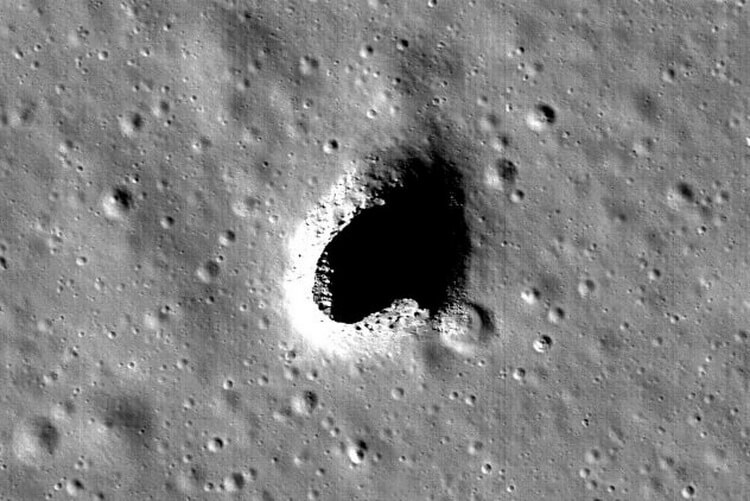
The recent discovery by Japanese scientists regained interest in the topic of lunar colonization. In October, the Japanese aerospace exploration Agency (JAXA) announced the discovery on our natural satellite caves with a length of 50 kilometers and a width of 100 meters. The object was discovered orbiting lunar probe “Kaguya” and is located under the surface of the volcanic region called Marius Hills. According to the current findings of scientists, sub-surface hollow space is a lava tunnel, formed by volcanic activity that took place here about 3.5 billion years ago. The presence of these lava tunnels have suspected for a long time, however, official proof managed to get just now.
The main enthusiasm for open data tunnels among scientists is that these objects can be the perfect place to base future lunar bases. The walls of the tunnels are very strong and thick, and therefore able to protect future colonists from extreme temperatures on the moon’s surface, ranging from -153 to +107 degrees Celsius. Moreover, these underground shelters can offer excellent protection for the colonists and equipment from the effects of cosmic radiation and micrometeorites, which on the moon are quite common. There are even suggestions that in those tunnels there are areas with accumulation of ice or even water, which will certainly be useful in the colonization of the satellite.
The missing link in the history of planetary formation
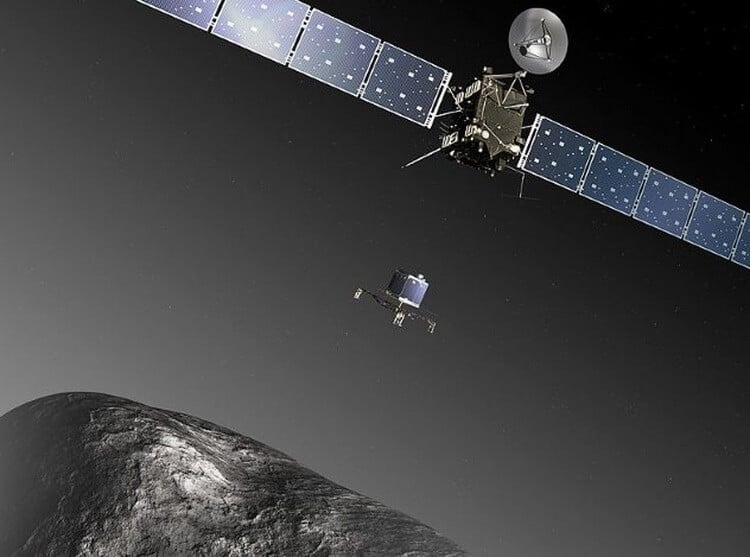
In 2014, one of the biggest news related to space, was the story about the probe “Rosetta” and the first ever successful landing of a spacecraft (module Philae) on a comet. This mission has continued until 2016 before scientists decided to break the “Rosetta” on the comet 67P/Churyumov — Gerasimenko. In the framework of this event the spacecraft managed to transmit turned out to be invaluable information in the European space Agency (owner of the probe and the lander). But the fact that this information is so important, we can discover only after a year.
According to a study published by the Royal astronomical society, data obtained by the spacecraft “Rosetta”, contain the missing link of the history of planetary formation. Scientists have found that a millimeter dust particles covering the outer layers of the comet’s age of 4.5 billion years, mixed with internal ice particles inside the comet. And such a symbiosis can only be explained by one model describing the formation of large objects within the Solar system – nebular hypothesis.
After further analysis of the data, scientists concluded that the dust particles originated from matter nebula, (from which, according to the nebular model, the Solar system was formed), and then continuously mixed with each other in the result of cosmic collisions with larger objects are constantly drawn between the increasing level of gravity. According to the hypothesis, these particles can attract each other so tightly that under its own gravity may eventually collapse. However, the comet 67P/Churyumov — Gerasimenko has not yet managed to reach this point, and thereby confirm the assumptions of scientists.
The solution of the riddle of the missing stars

In 1437 Korean astrologers found in the constellation of Scorpio new star that shone brightly for two weeks, and then disappeared. Where it came from and what happened – no answer and could not. It took almost 600 years to solve the mystery. The author of the decision was the astrophysicist Michael Shara of the American Museum of natural history, who found out that his Korean colleagues in the XV century witnessed the cataclysmic event. As it turned out, the actors in this event were two objects – a white dwarf and a normal star, which actually became a donor mass of a dwarf.
When the temperature and density of a white dwarf reach critical values to trigger fusion reactions, the dwarf creates a powerful release of energy, which is called new. This astronomical phenomenon is accompanied by an incredible flash, the witness of which became the Korean astrologers. A couple of weeks Nova has faded, and the new star disappeared from the sky.
Solving the puzzles helped the incredible precision with which the Seoul scientists of the XV century, recorded this event. It happened on 11 March 1437 was observed between the second and third star of the constellation, during the sixth lunar Eclipse. But even in this case, Michael Ball had to consult with historians and learn Chinese astronomical map to see the exact location of the white dwarf. The work took as long as 30 years.
Assessment of the probability of life on Enceladus
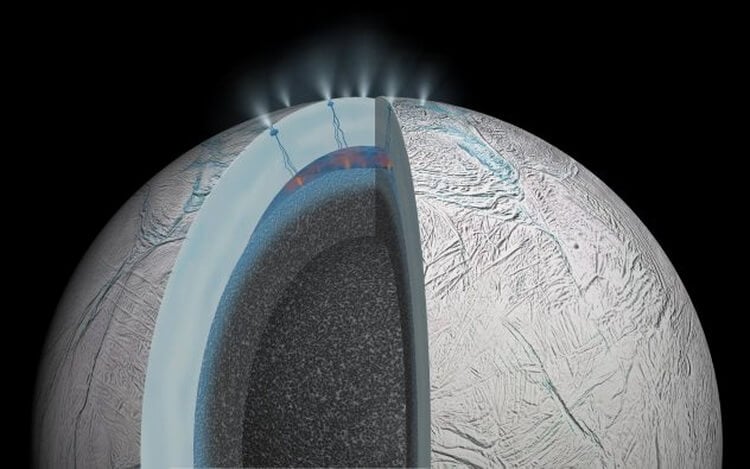
The results of a study published in the journal Science, indicate that in the subsurface ocean of Saturn’s moon, Enceladus, chemical reactions occur, similar to those that can be found near the earth’s geothermal sources. To such conclusions scientists came after the analysis of the data collected as a result of the flight of automatic interplanetary station “Cassini” in 2015 through the emissions of ice particles from the moon’s surface and the determination of molecular hydrogen.
The astronomers behind the study believe that the source of hydrogen in this case is the continuing reaction of interaction of hot water with rock, the deep waters of the ocean and near the core of the satellite. These findings confirm the results of earlier studies conducted in 2016, in which it was found that discovered by Cassini on Enceladus particles of silica, most likely, was exposed to hot water from the depths of the ocean.
On Earth microbes are living near deep-sea geothermal sources are used for the survival of a primitive metabolic process, called methanogenesis. Analysis of Cassini suggests that the ocean of Enceladus has all the resources needed to support this process. The presence of life on Saturn it does not prove, but significantly increases its potential habitability, the researchers say.
Enceladus began seriously to consider as a potential habitat for extraterrestrial life after discovering it in 2005, subsurface ocean. Private and public space agencies are considering the possibility of sending in 2020-ies to the Enceladus orbital probes and landing modules with scientific equipment designed to search for life.
The answer to the mystery signal “Weird!”
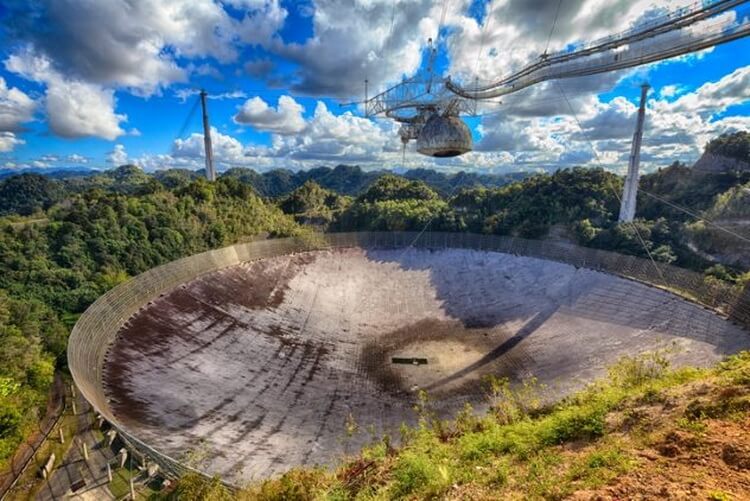
In 1977, astronomers from Ohio state University (USA) conducted routine monitoring of the sky in search of alien intelligence, and suddenly found abnormal radio transmission of extraterrestrial origin. Scientists were so impressed that on the printout of radio data readings one of them did not find anything better how to make a signature with the word “Wow!”. Thus, a signal “Wow!” (“Wow!”). And this year we have a signal, “Weird!” (“Weird!”).
It was first caught researchers from the Arecibo Observatory in Puerto Rico on may 12. Its source was from the Ross 128, also known as FI Virgo – a dim red dwarf star located 11 light years from us and not having around any of the planets. Within 10 minutes the signal was observed, “with almost constant frequency”, and then disappeared.
Of course, when astronomers announced this event, the first public reaction was aliens! In turn, the team of Arecibo, though recognized that the signal is “very unusual”, but immediately made the assumption that, most likely, it represents the fragments of the broadband radio transmissions from one or more geostationary satellites. Further collaboration of astronomers from Arecibo and SETI has confirmed this assumption. It turned out that the signal is “Weird!” creates a satellite, which goes at a very remote geostationary orbit.
However, this is not the last time we heard something about the star Ross 128. In November, astronomers announced that next to the red dwarf has at least one planet. Moreover, the scientists found that the planet has a very low rotation speed and, being only 11 light years, is the second closest candidate earth-like planet. In this respect, it even beats the extrasolar planets of Proxima b as it is located on the quieter a red dwarf, not creating a huge emission of radiation, which could destroy the planet’s atmosphere (if it has).
The collision of two neutron stars

Representing the core remaining after the supernova explosion of stars formed from the once very massive stars, neutron stars are quite rare and intriguing objects at the same time. This year, scholars had the opportunity in the “first series” to watch the encounter of two neutron stars.
With the help of gravitational wave detectors LIGO and VIRGO scientists have been able for the first time to observe the light and gravitational waves from the same cosmic events. The collision also watched dozens of other telescopes that helped at the same time to shed light on many other astrophysical and astronomical mysteries.
In the framework of the observations, the scientists confirmed that the event of the collision of two neutron stars (dubbed “celonova”) produces a short blast of gamma radiation. In addition, the space telescope Fermi, is also observing this event, was able to confirm the earlier hypothesis predicted that gravitational waves move at the speed of light or at least very close to it. Telescope “Spitzer”, in turn, has witnessed the longest burst of infrared radiation that would indicate that kilanova are the main source of emission of heavy elements, as these elements cannot appear in a supernova.
Of course, watching this is so rare and fantastic event not only helped to answer the many unsolved up to this issues, but has spawned many new. For example, scientists were very puzzled by the brief burst of gamma radiation that accompanied this phenomenon. Despite the fact that its brightness was comparable with the conventional emission, it was 1/10 lower than any previously recorded emission of gamma radiation. In other words, it was very dim, and scientists can’t figure out why. I think that over time, when scientists will understand the enormous amount of data provided by this event, we will hear many new revelations and will face no less interesting mysteries.
Martian sand or water

The announcement of the discovery of liquid water flows on Mars has become one of the hottest topics in 2015. However, further investigation of the issue revealed that this statement was wrong. Discovered streams are indeed present on Mars, but they consist, most likely, not of water but of sand.
Since their first discovery, similar to “duplicate line on the slopes,” as they are called neutral researchers, were found in more than 50 regions of the red planet. They hide on the hills. Presented in the form of dark bands. The season is changing to warmer, they expand downward, and then at the return of the cold season disappear, appearing again next year. Such behavior on Earth demonstrates only water, so scientists have suggested that Mars talking about one and the same. But the findings of the study Astrogeological research center, located in Arizona, suggests that these flows consist of a granular substance. The researchers note that “repeated lines on the slopes” was found only on steeper hills with an angle of 27 degrees, which is comparable to terrestrial dunes. And if these threads really was out of the water, and on the less steep slopes of Mars, they, too, would have to meet.
However, the full explanation for these flows has not yet been found. The movement of sand masses, for example, still cannot explain some of the features that are found these lines on the slopes of the seasonal occurrence, the gradual expansion of the stream, and also note the presence of salt and a quick disappearance with the change of season. Some experts believe that these flows can occur under the influence of some unique weather mechanism that is present on Mars, but the final decision requires new observations. Ideally on the spot.
Star-zombie
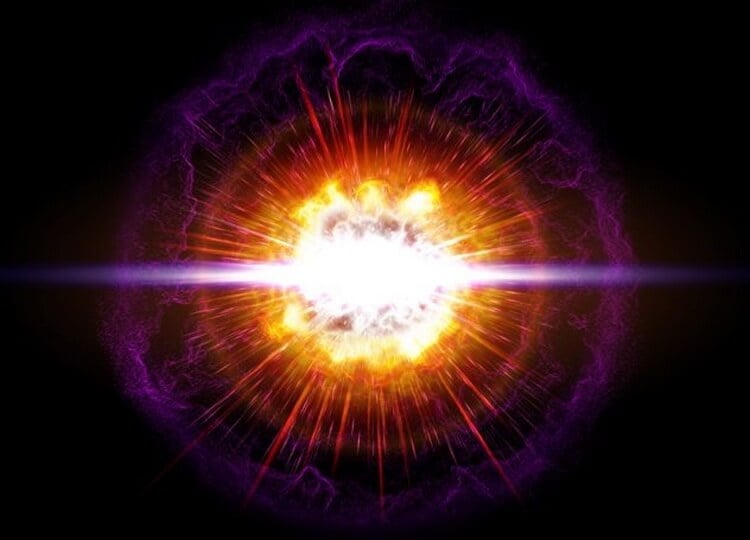
In September 2014, after extensive observation of the sky was discovered a new star, ready to enter a phase of a supernova. At first glance, the star seemed quite unremarkable scholar, so she was given the same unremarkable name iPTF14hls. Even when she blew, she still looked like a normal supernova class II-P, which was to die in about 100 days or so.
And she really went out. But only for a while. A few months after that, the star was lit up again and began to increase its brightness. Since the object iPTF14hls at least 5 times already changed its brightness becomes brighter, then dimmer. When astronomers finally realized that it is not really common, they decided to turn to archival records and found something interesting: in the same place where now is located iPTF14hls, in 1954, was also discovered supernova.
In the end it turned out that the star was a supernova, miraculously survived 60 years exploded again. For such an unusual by all standards, the behaviour of some even called her a star-zombies. According to one of the assumptions of this star is the first ever living proof of the existence of the so-called pulsating pair-instability supernova – stars so massive and hot that in their cores they generate antimatter. This, in turn, would explain her extremely unstable behaviour accompanied by multiple emission of matter before it finally will be destroyed and will not become a black hole.
However, not everyone shares this view, pointing to neautrogena some of the factors predicted by the hypothesis of a pulsating pair-instability supernova. Others, in turn, say that such phenomena could be expected in the early Universe, but not now. Opening one of these today, is equivalent to the discovery of a living dinosaur.
First guest from outside the Solar system
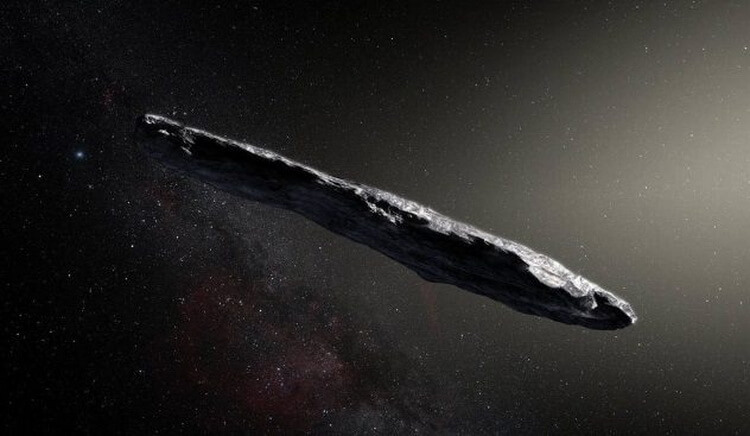
Earlier this year astronomers found the first confirmed object from outside the Solar system. A reddish, cigar-shaped visitor was first taken for a comet, however, after more thorough observations using the Very large telescope (VLT) revealed that our guest is the asteroid. “Lost soul” decided to give a Hawaiian name Oumuamua, (Omului), which means “messenger”.
The length of the asteroid is more than 400 meters and a diameter of less than 40 meters. Interestingly, with the rotation of the brightness Oumuamua varies by several orders of magnitude every 7.3 hours, which again was not observed at other similar space objects. Currently, scientists believe that the asteroid came to us from VEGA, the brightest star in the constellation Lyra, but the journey took so long that by now the star is not where I was before.
Asteroid Oumuamua officially recognized as the first object flew towards us from outside the Solar system, but scientists hope that with the help of new and more powerful telescopes, we can detect even more interstellar objects, have decided to visit our system. At the same time, the researchers now decide whether to send to the asteroid space probe. The problem is that Oumuamua now hurtling through the Solar system at a speed of 138 000 kilometers per hour, which is more than two times faster than any created and run by human spacecraft. But even in this case, some astronomers believe that the asteroid strike is still possible, and consider the likelihood of such attempts as part of a new project Lyra.
Discovery the first white dwarf pulsar
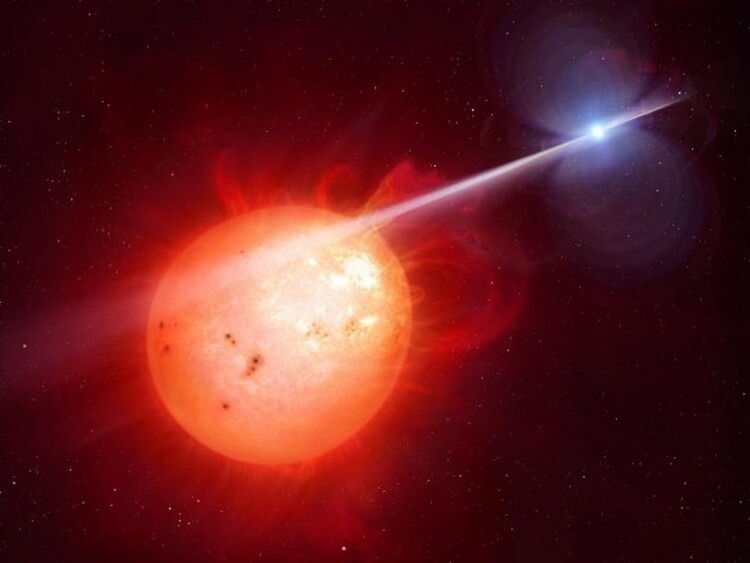
In February, astronomers from the University of Warwick reported the discovery of a white dwarf pulsar – first of its kind in the known Universe.
Typically pulsars come from neutron stars emitting beams of electromagnetic radiation at regular intervals. Since this radiation can be monitored only when its beam is directed toward our planet, we perceive it as a ripple. Scientists have long debated the topic that the pulsars can appear from white dwarfs, and this year researchers finally received the missing confirmation.
The object of study in our case are the remains of a star AR of Scorpio, located in 380 light years from Earth in the constellation of Scorpio. Like all white dwarfs, this object has incredible density. With the size comparable to our Earth, its mass is 200 000 times more. AR Scorpion is part of a double star system. The companion is a red dwarf, which falls under the impact of the beam of the pulsar approximately every minute (1.97 times per revolution).
A new discovery has managed to create for the scientists a new puzzle to solve. The researchers assumed that the brightness of the binary star system will change in a minute and the time ratio in minutes due to the particular movement of the emitted beam of the pulsar and bounds due to the difference of the orbital periods of the two stars. However, comparing their data with archived information received about this double star system in 2004, scientists discovered that in fact this variability extends over decades. Scientists believe that it’s all in the interaction between the two stars, and is currently trying to develop a model that could explain such a feature.
10 most high-profile stories about space in 2017
Nikolai Khizhnyak